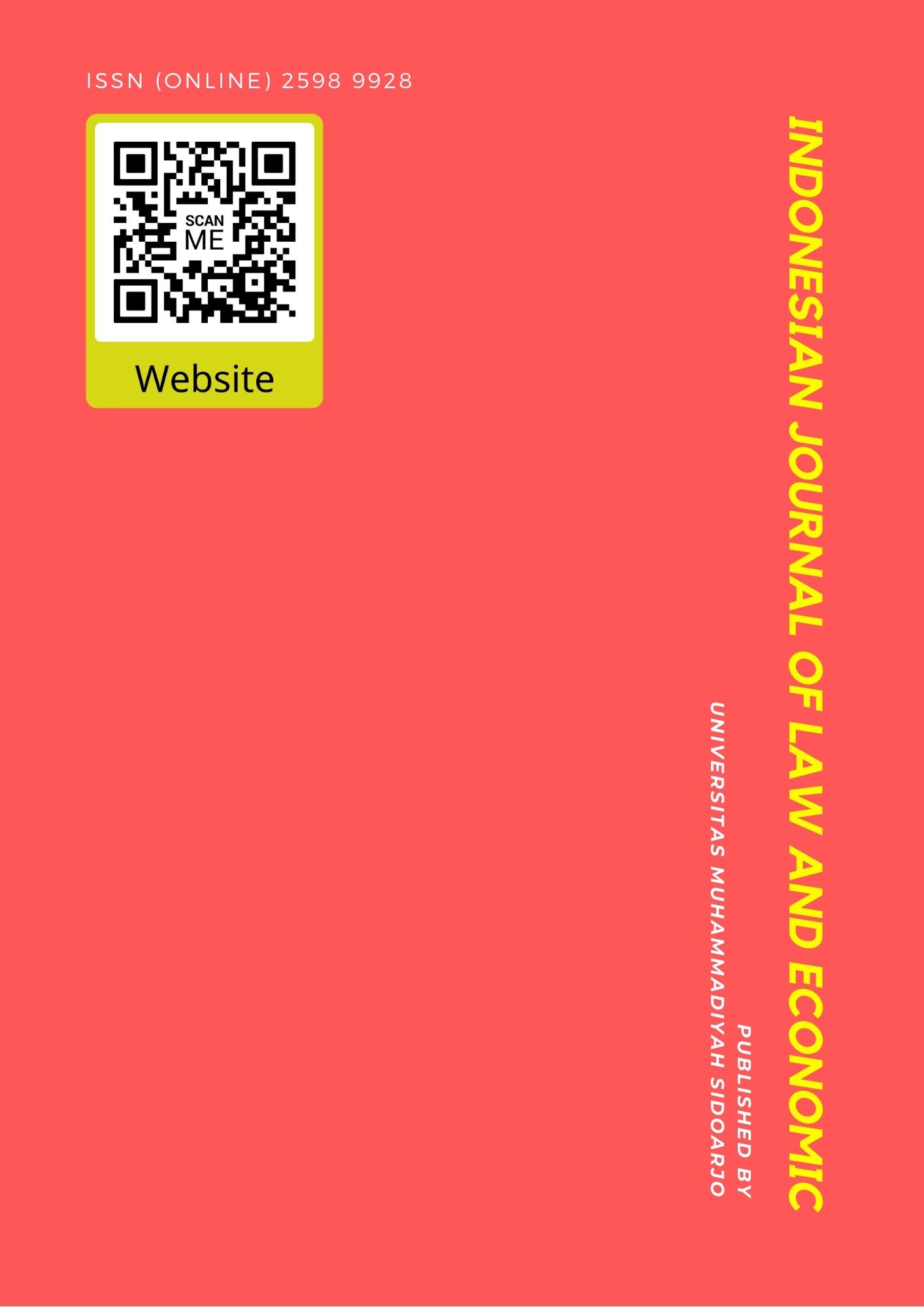- Ahmad Dhani,
- Juridical Analysis,
- Idiot,
- Judge's Decision
Copyright (c) 2021 Herni Eva Wulandari, Emy Rosnawati

This work is licensed under a Creative Commons Attribution 4.0 International License.
Abstract
This study aims to analyze the legal considerations made by the judge to sentence the defendant in a criminal case of insulting idiots in Ahmaddhaniprast's Instagram vlog. This research is based on the judge's decision which does not pay attention to the juridical facts and only pays attention to the indictment and the demands of the Public Prosecutor. Methods This research uses a normative legal research type that examines primary legal materials and secondary legal materials using the following approaches: legislation approach; and case approach, as well as descriptive qualitative analysis of legal materials. The results of this study indicate that the legal considerations made by the Judge in Decision No. 275/Pid.Sus/2019/Pn.Sby., only paid attention to the Indictment and the demands of the Public Prosecutor and ignored the Defendant's Statements, Witness Statements, Expert Witness Statements and Evidence. in the trial, so that the judge's decision is not in accordance with the legal facts that occurred. The judge was not right in applying the rules in making a decision based on Article 27 paragraph (3) ITE by referring to Articles 310 and 311 of the Criminal Code regarding blasphemy and slandering someone who has committed a certain act, due to the fact that idiotic remarks were not directed or accused at someone. The judge should have enforced the provisions of Article 27 paragraph (3) of the ITE Law by referring to Article 315 of the Criminal Code, because the element of light humiliation (eenvoudige belediging) was fulfilled as stated by witnesses, expert witnesses and the statements of the Defendant.
Downloads
Metrics
References
- Achmad Yulianto dan Mukti Fajar ND. Dualisme Penelitian Hukum Normatif & Empiris. Yogyakarta: Pustaka Pelajar, 2010, h. 34.
- Peter Mahmud Marzuki. Penelitian Hukum, Cetakan ke 8. Jakarta: Prenada Media, 2013, h. 158.
- Ahmad Sofian, “Tafsir Pasal Pencemaran Nama Baik”, Desember 2017. [Online] Available: https://business-law.binus.ac.id/2017/12/28/tafsir-pasal-pencemaran-nama-baik/ [Diakses 02 Mei 2021]
- R. Soesilo, Kitab Undang Undang Hukum Pidana (KUHP), Serta Komentar-Komentarnya Lengkap Pasal Demi Pasal, Jakarta : Politeia, 1995, h. 225.
- Josua Sitompul, “Pencemaran Nama Baik di Media Sosial, Delik Biasa atau Aduan”, Juli 2018. Available: https://www.hukumonline.com/klinik/detail/ulasan/lt520aa5d4cedab/pencemaran-nama-baik-di-media-sosial--delik-biasa-atau-aduan/ [Diakses 01 Mei 2021]
- Suhrawardi K. Lubis. Etika Profesi Hukum. Jakarta: Sinar Grafika, 2012, h. 25.
- Abintoro Prakoso. Pembaruan Sistem Peradilan Pidana Anak. Yogyakarta: Laksbang Grafika, 2013, h. 169
- Abdul Manan. Penerapan Hukum Acara Perdata di Peradilan Agama. Jakarta: Kencana, 2012, h. 291.
- Margono. Asas Keadilan, Kemanfaatan dan Kepastian Hukum dalam Putusan Hakim. Jakarta: Sinar Grafika, 2012. h. 37.
- Crisdinata Refta Anggraini dan Emmilia Rusdiana, Kajian Yuridis Pada Putusan No,275/Pid.No/Pid.Sus/ 2019/PN.sby., Tentang Penghinaan Dan/atau Pencemaran Nama Baik di Media Sosial, Jurnal Novum, Program Studi Ilmu Hukum, Fakultas Ilmu Sosial Dan Hukum, Universitas Negeri Surabaya, 2019, h. 1.





